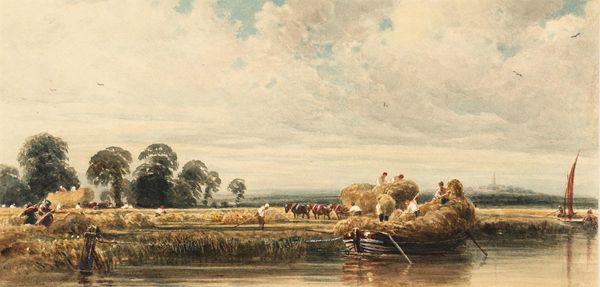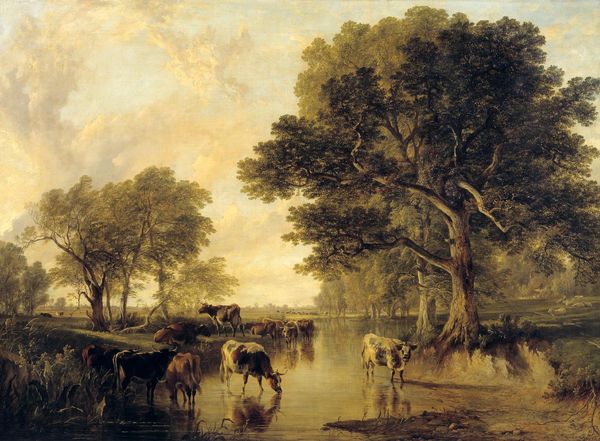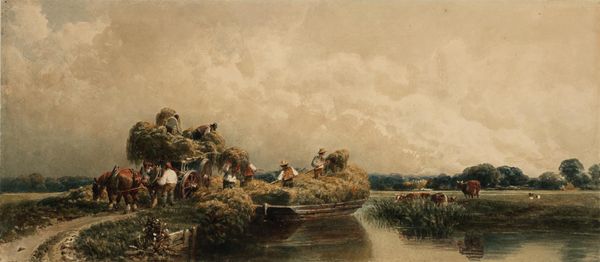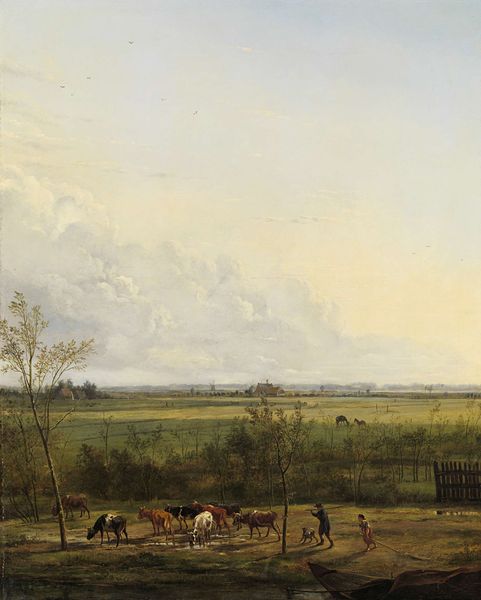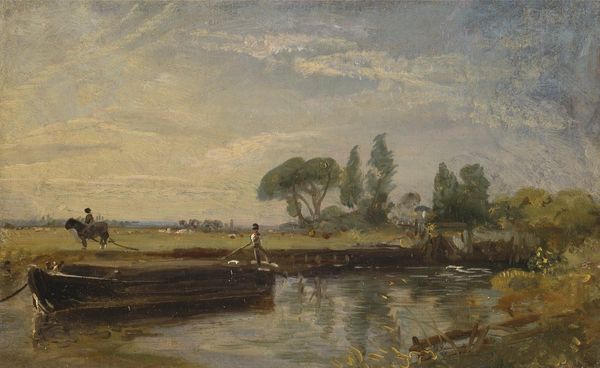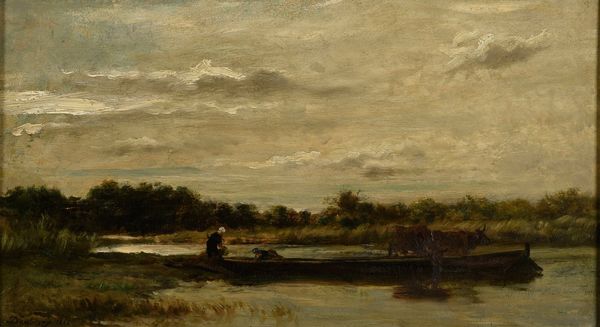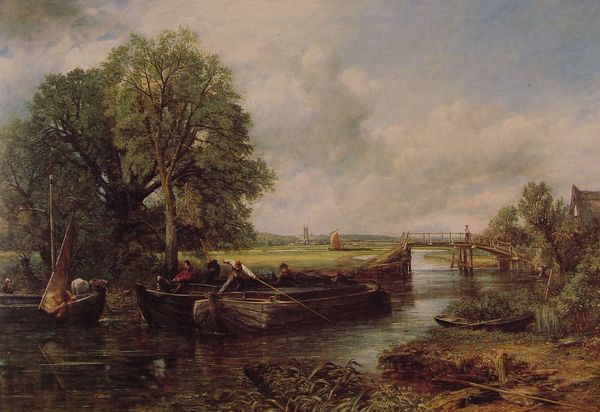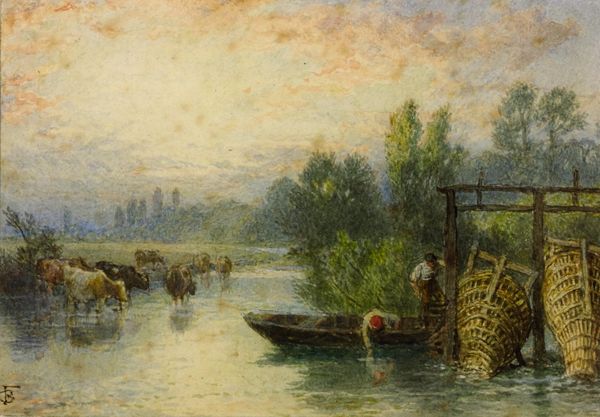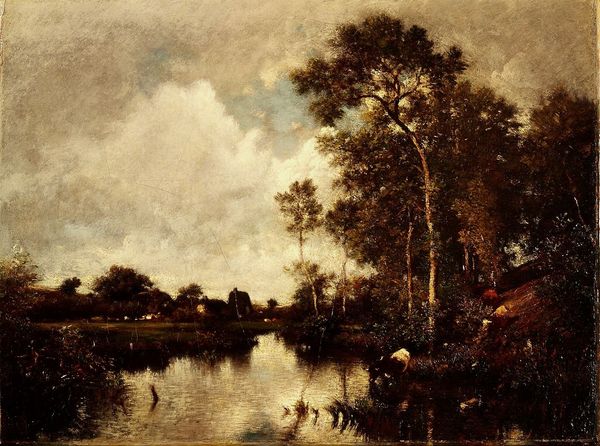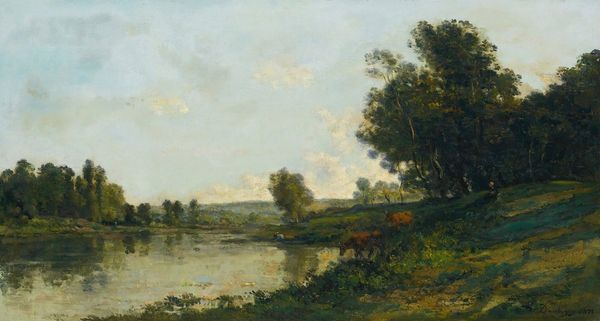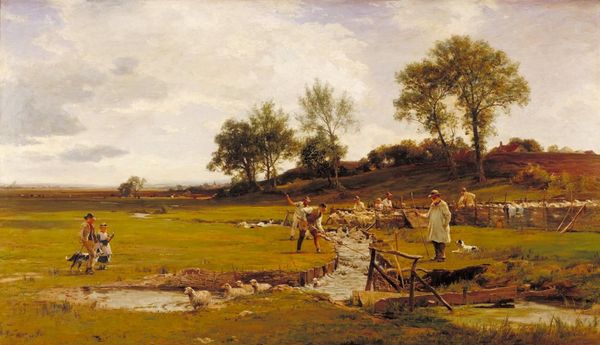
painting, oil-paint
#
rural-area
#
painting
#
oil-paint
#
landscape
#
oil painting
#
romanticism
#
genre-painting
#
realism
Copyright: Public domain
Curator: Looking at this piece, I immediately feel a sense of peacefulness. The muted colors and soft light create a calming effect. Editor: Indeed. This is "Cows Crossing a Ford" painted in 1836 by Jules Dupré. It’s an oil on canvas, and the interesting part about Dupré is how he straddled the line between Romanticism and Realism in his landscape paintings. Curator: I see the Romantic influence in the way the sky dominates the scene, it's almost overwhelming. It speaks to the power of nature, that divine presence. But there’s something also very down-to-earth in the details, like the specific breeds of cows and their interaction with the water. What kind of significance do you see in his rendering? Editor: Dupré was deeply involved in the Barbizon School, seeking an honest portrayal of rural life away from idealized academic landscapes. The "ford" itself represents transition, not only for the animals but also metaphorically for the society. Think about France at that moment, in flux politically and economically. Depictions of humble labor validated the working class at a critical moment of social change. Curator: I'm fascinated by the repeated motifs across his paintings. He obviously had deep feelings about specific iconographic objects. Look at the consistent ways he renders these subjects: the stoic farmers, and those placid, bovine figures traversing space. I wonder what kind of emotional resonance cows had for Dupré. Editor: What do you mean? Curator: They reappear in a number of pieces. We have to recognize that he used these figures symbolically. Cattle are often stand-ins for peace, prosperity, pastoral virtue. How much did Dupré embrace this pre-industrial view of country life, versus engaging in commentary of agrarian conditions? What did those fields mean for his French audience? Editor: That's key. The rise of urban centers transformed how people saw the countryside. Dupré capitalizes on that nostalgia while contributing to the development of Realist depictions. The Romanticism style lends itself to this impulse. Curator: That contrast makes this art particularly potent, reflecting how a new era idealized old forms, but also the way old forms served to critique the new. Thank you for clarifying that complex web. Editor: It was a pleasure! I see the rural as less of an ideal and more as a shifting construction itself.
Comments
No comments
Be the first to comment and join the conversation on the ultimate creative platform.
